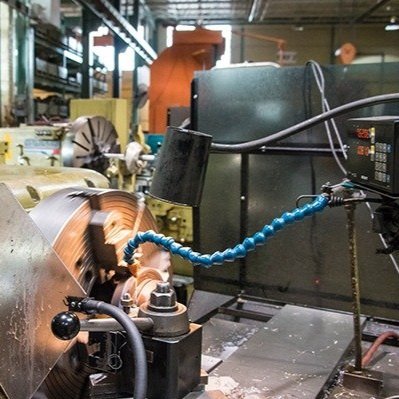Integrating Factory Automation into Shade Manufacturing
/Draper Inc. experiences a century-long evolution of product diversity and manufacturing automation transitions while holding firm to its family-owned foundation.
By Michelle Segrest, Navigate Content - Reporting for Efficient Plant Magazine
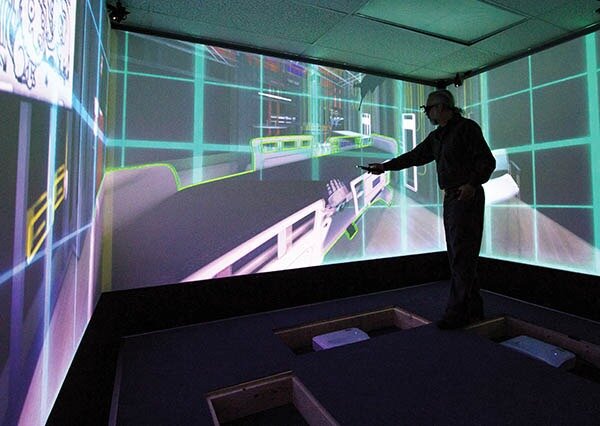
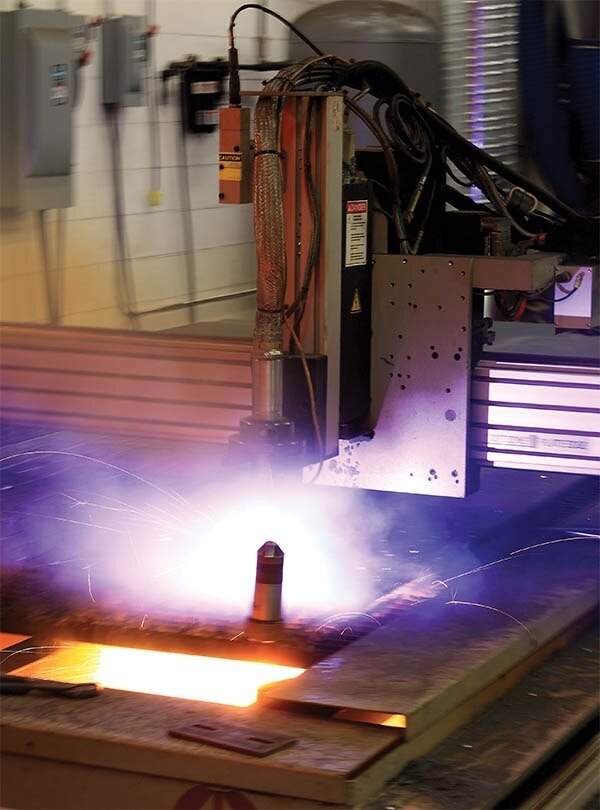
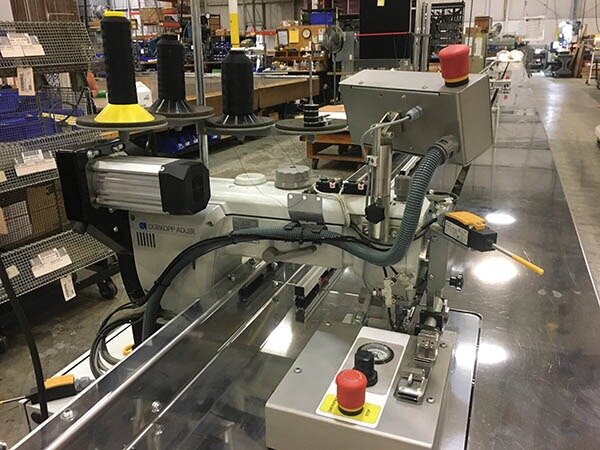
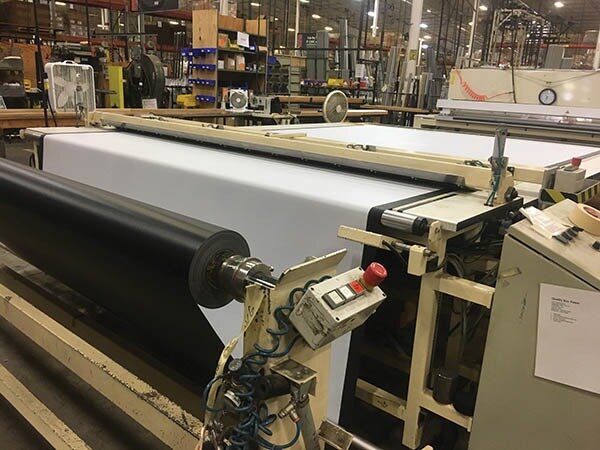
A few things have changed in the 115 years since fifth-generation, family-owned Draper Inc. opened its doors for business in the small town of Spiceland, Indiana, in 1902. There were no phones, no cars, and no computers. Less than 20 years ago, operators still used bulky, 5-lb. scissors to hand-cut fabric shades and projection screens, and a seamstress would sit at a table and operate a traditional sewing machine with a foot pedal.
“After 40 years of hand-cutting with these heavy scissors, some of the operators had some unique calluses,” remembered Mike Broome, vice president of manufacturing and a 49-year veteran of the company that was founded by his grandfather, Luther O. Draper.
Today, following a focus on lean manufacturing that began in 2000, automated machines do the cutting and sewing and much of the other manufacturing for the company that is located just 40 miles east of Indianapolis.
“In the beginning, this was just a startup,” Broome said. “Luther O. was the sales guy and he traveled through Indiana, Ohio, and Michigan on a streetcar/railroad line. He would load his bicycle on the Interurban and call on school people and board members as they were working in their fields. Most of them were farmers. He would then come home and make the things he had gotten orders for during his travels.”
Now, the company has two subsidiaries in Sweden and a distribution center in the United Kingdom, and it ships products and solutions to more than 100 countries.
Maintaining Family Business Core Values
Some things, however, stay the same.
“We have found a way to balance a need to change, while retaining the core values that built this company,” Broome said. “One of our greatest strengths is that we have great people. We deal with each other fairly and treat each other with respect. We understand that if the company does well, we all do well. We’ve done a lot with machines. We’ve done a lot with computers. But the thing that is far more important than any of that is that we have good people.”
Draper Inc. is a custom manufacturer of audiovisual and presentation products, window shades and solar-control solutions, and gymnasium and athletic equipment. Broome and his cousin, Draper president John Pidgeon, started working with the company on the same day: July 6, 1968. They agree that the evolution within the company that they have seen in the past five decades has been remarkable.
“It occurred to me a few years ago that we don’t make any of the products that we made when John and I started here,” Broome said. “Some of them are similar. We made a lot of spring-roller shades then, and we still make some. But the rollers were previously made of wood; now they are made of steel. The fabric used to be canvas and now it is fiberglass based. The slats used to be wood; now they are generally aluminum. As you get older it gets obvious how much things have increasingly changed over the years. And mostly for the better.”
With advanced technology and automation comes an increase in training and capability. “Twenty years ago, if you had asked me to describe our skill set, I would have said ‘light assembly,’ because that is largely what we did and some of what we still do today,” Pidgeon said. “But today I would add engineering expertise, product-design manufacturing, and project management. We are increasingly involved in large, complex building projects, which may take three or four years from concept to completion.”
Diverse Solutions for Automation Advancements in Manufacturing
For the first 50 years, Draper’s product line didn’t change very much and neither did the market. The company manufactured window shades for public schools. In 1957, Luther Pidgeon (Luther Draper’s grandson) had an idea for an inexpensive classroom projection screen and acquired a patent. It was unique because it didn’t have a case, and other screens at that time did. The timing was right. The U.S. government started pouring money into education, and AV presentations became a trend.
“I’d like to think Luther had all that figured out, but I think it was blind luck,” Broome said. “But it was fortunate. We still concentrated on the school market and the product. It was a projection screen but, except for the fabric, it was basically a window shade with different hardware.”
Around 1968, when Broome and Pidgeon started working at Draper, the government’s education funds had dried up and the company realized it needed to broaden its product line to decrease its dependence on public schools. This inspired different models of projection screens. In the mid-1970s, projection-screen sales overtook window-shade sales. In the mid-1980s, video projectors became popular.
A focus on the commercial-building market, rather than just on schools, inspired the development of FlexShades, and later Draper acquired a gymnasium-equipment company. Even through all of this diversification, Draper never lost its primary focus—providing innovative solutions.
“I have felt that from day one this company has been providing solutions,” said director of engineering Harold Seib. “In 1957, adding the projection screens was a solution. In the ‘90s, changing over to more commercial-based window coverings was a solution to the changing market. Through the years, the company needed that diversification. We don’t make widgets anymore. We make solutions and design products for specific purposes for specific customers. Even the employees understand that when we are trying to find a solution on the floor everybody gets involved. It’s not being dictated from the top. Everybody listens and everybody communicates.”
Now with thousands of products, Draper’s evolution has also expanded from creating a crafted product to manufacturing with advanced technology.
Lean Manufacturing Best Practices
In the past century, Draper has grown from one employee and one small building to 700 employees and eight manufacturing buildings spanning 425,000 sq. ft. Through major world wars, the Great Depression, and several economic recessions, the company has never had a layoff. The growth, combined with the expansion and diversification of products, inspired an intense focus on lean manufacturing, which began in 2000.
“We make a large variety of products,” Broome said. “Our primary tools for pursuing Lean are rapid-improvement events. We use cross-functional teams. It is, of course, essential that the operators in that particular area are on the team. But it’s also important for the people who really don’t know too much about how the product is made to be on the team. Also, we include sales [personnel] so they can speak for the customer. We get a lot of different input this way.”
Value-stream mapping exercises gauge flow efficiency. Productivity and performance are measured. Quality is also a huge focus.
Automation & Continuous Improvement in Manufacturing
Ryan Abbott is the process engineering manager and works closely with Seib’s team, which includes facilities engineer Chris Field. The team works hard on continuous improvement and has identified many opportunities.
“We have added a lot of modernization and technical improvements in recent years,” Abbott said. “These guys talk about going from sewing machines to RF hemmers. Those are big quality improvements. But this business has been around for 115 years. There are a lot of practices that are still from that era of manufacturing. We are working toward building that up and moving further and further down the Toyota Production System concept of Lean Manufacturing processing methodologies that can help us become more efficient.”
The company has incorporated automation and new equipment to complement the old standards. Abbott explained that the process happens in steps, beginning with pieces of automation and doing things differently—and then it grows into something else. In the beginning, the team was focused on automating and installing cutting machines, and then there were other areas that were perhaps ignored. This prompted the team to look at things differently.
For example, a PM Optimization program triggered results in many areas, Field said. “We started with fabric optimization. We were changing our cutting methods. We were going from machines that cut one shade at a time and started putting in machines that put in two shades at a time. Our orders were growing, and they were getting more consistent. You may get an order that has 100 shades and all 100 of them are the same size. It made sense to take a wider piece of fabric and use the same amount of time to cut two shades instead of just one.”
Previously, operators were handed a stack of paper tickets and expected to sort and accurately match the correct orders. Now orders are downloaded into a CMMS, which saves time and improves quality. Field said he is working on the sixth revision of the CMMS and finds significant improvements with each upgrade.
The company is also using the system to manage the approximately 4,000 assets that must be maintained. All assets are assigned a unique number and have a maintenance history. However, the process has included some challenges, especially with a workforce that has been doing things the traditional way for many decades.
For example, when the company installed its first CNC cutting table, it sat idle for three months. The operators preferred to do things the old way—putting on knee pads, climbing onto the table, and cutting by hand. The transition was slow because the workers feared that machines were replacing their jobs. Eventually, they bought into the value that the new machinery provides.
Most of Draper’s manufacturing equipment is about 16 years old. The automation effort started in 2000. Prior to that there was no PLC-driven equipment. Even in the late 1990s, everything was primarily hand crafted. Now, even the etched-metal labels on the machines are manufactured on site.
With a maintenance team of just eight technicians, Eric Carrender, department head for maintenance and exhibits, must consistently learn new skills to keep up with the changing technology. “We hired some people who were more electronically inclined,” Carrender said. “We needed people who could handle the PLC parts. Of course, the newer guys are more fluent on the computers. But any of them will take a shot at it. We all try to help each other and learn from each other.”
Training on new machines now happens as soon as the equipment arrives. As the processes, product solutions, and equipment continue to change, Draper remains steadfast to its family-owned, people-first culture.
“What brought me here was the interesting environment,” Abbott said. “I’ve worked at places all over the country in industries from high technology to low technology—everything from a 1945-built plant to the most advanced machining centers that you’ve ever seen. But I wanted to work here because of the culture and the people. What Mike Broome said about the people caring about the company is true. My specific job is to help us move to a more modernized approach to manufacturing and routing but, in general, we all have the same job…we are all here to just help the company create quality solutions for our customers.”
The exact location of Draper’s first factory is a mystery, although it was in Spiceland, IN, where the company is still headquartered. Photo courtesy Draper Inc.
Draper History
The company was founded by Luther O. Draper in 1902 to manufacture window shades for schools, the primary product for the first 60 years.
In 1918, Draper was joined by his son-in-law, Elmer Pidgeon. Draper later became a prominent state politician, and Pidgeon assumed management of the company in 1938.
Pidgeon’s son, Luther, joined the firm in 1940 and became its president in 1960. He continued in that capacity until his death in July 2004.
In 1957 Luther Pidgeon secured a patent on an inexpensive classroom projection screen, marking Draper’s entry into the screen business. Draper-manufactures products today that are closely related to projection screens include rear-projection display systems, video-projector mounts and lifts, plasma-display mounts and lifts, and presentation easels.
In 1989, the company introduced FlexShade systems, a second line of window shades designed for the commercial market. In 1994, Draper entered the gymnasium-equipment market. Today, the company’s gymnasium-equipment products include basketball backstops, gym dividers, wall pads, volleyball equipment, batting cages, and wrestling-mat hoists.
In addition to its Spiceland, Indiana, headquarters, Draper Inc. has sales offices in Placentia, California. The family of companies includes three wholly owned subsidiaries: Draper Group Ltd, a sales and warehouse facility in Corby, Northamptonshire, United Kingdom; and two manufacturing companies in Sweden: Draper Europe AB, a leading European projection-screen manufacturer, and SMS Smart Media Solutions AB, a leading European provider of video-projector and flat-screen mounts; and Evoko, a subsidiary of SMS Smart Media Solutions.
Michelle Segrest is President of Navigate Content, Inc., a full-service content creation firm. She has been a journalist for more than three decades and specializes in covering the people and processes that make a difference in the industrial processing industries. Contact her at michelle@navigatecontent.com
Originally published in Maintenance Technology, October 2017
Updated October 2019





